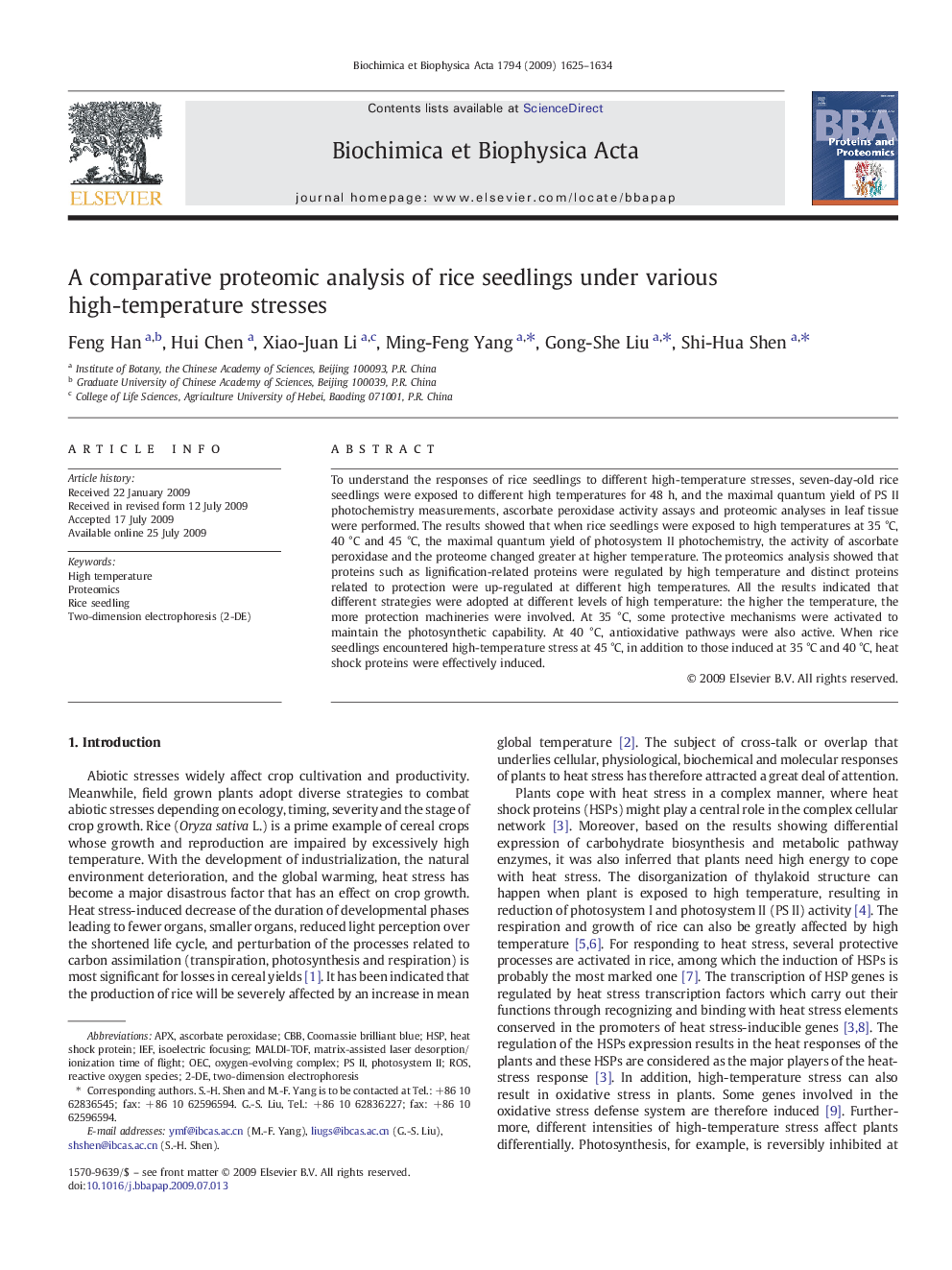| Article ID | Journal | Published Year | Pages | File Type |
|---|---|---|---|---|
| 1178938 | Biochimica et Biophysica Acta (BBA) - Proteins and Proteomics | 2009 | 10 Pages |
To understand the responses of rice seedlings to different high-temperature stresses, seven-day-old rice seedlings were exposed to different high temperatures for 48 h, and the maximal quantum yield of PS II photochemistry measurements, ascorbate peroxidase activity assays and proteomic analyses in leaf tissue were performed. The results showed that when rice seedlings were exposed to high temperatures at 35 °C, 40 °C and 45 °C, the maximal quantum yield of photosystem II photochemistry, the activity of ascorbate peroxidase and the proteome changed greater at higher temperature. The proteomics analysis showed that proteins such as lignification-related proteins were regulated by high temperature and distinct proteins related to protection were up-regulated at different high temperatures. All the results indicated that different strategies were adopted at different levels of high temperature: the higher the temperature, the more protection machineries were involved. At 35 °C, some protective mechanisms were activated to maintain the photosynthetic capability. At 40 °C, antioxidative pathways were also active. When rice seedlings encountered high-temperature stress at 45 °C, in addition to those induced at 35 °C and 40 °C, heat shock proteins were effectively induced.
